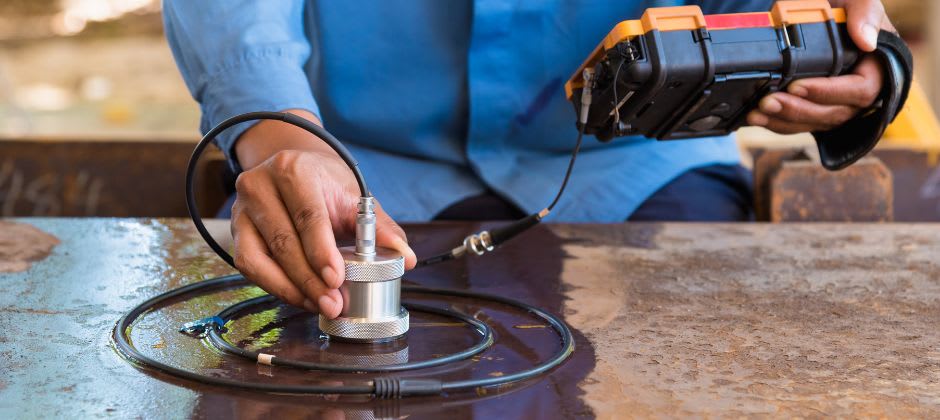What does a non-destructive testing (NDT) technician do?
NDT technicians examine the physical properties of materials and components to detect corrosion, cracks, flaws and other imperfections which could lead to unreliability in product performance or in the worst case, product failure. They also inspect plant machinery to determine if maintenance is necessary. It is essential that the testing process itself does not have any detrimental effect on the material or plant under examination.
Materials which are used for structures are tested at every stage to ensure that they are safe. For example, the materials used in aircraft manufacture are tested when they are made, while the fuselage is being constructed and throughout the operating life of the aircraft.
NDT technicians use a variety of techniques to test materials, such as:
- Visual examination - including the use of lenses, close circuit TV and fibre optic devices
- Liquid dye penetrant testing - fluorescent liquids are used to stain surfaces which show up imperfections when viewed under ultraviolet lighting
- Magnetic particle testing – magnetic particles are applied to magnetised ferrous materials, these then align along cracks and defects - often combined with liquid penetrant techniques
- Radiographic testing – materials are X-rayed to show up internal defects
- Ultrasonic testing - high frequency sound pulses are fired into materials and differences in reflected signals are interpreted for significance
- Eddy current testing - an electric current is passed through conductive materials and differences in the flow of current are measured
- Resonant testing - acoustic emissions and vibration monitoring techniques are used to listen to the growth of a crack or imperfection.
NDT is also used as part of quality control processes, particularly in manufacturing. It covers a wide range of other industries including aerospace, defence, transport, power, shipping, steel, oil, gas and petrochemical.
What's the working environment like working as a non-destructive testing (NDT) technician?
Hours vary but are typically 9am to 5pm, Monday to Friday. Shift and weekend work is also common.
The work environment will vary according to the job and the industry. NDT technicians may work in clean laboratories, on noisy factory floors or outdoors. Protective clothing including gloves and face masks may be required for certain jobs. Some substances are hazardous so NDT technicians have to adhere to strict health and safety regulations.
What does it take to become a non-destructive testing (NDT) technician?
To be a non-destructive testing technician, you should:
- Have good analytical skills
- Be able to pay attention to detail
- Be able to use a wide range of tools
- Have IT skills
- Be able to communicate clearly in writing and verbally
- Have good eyesight and colour vision
- Be aware of health and safety issues.
Non-destructive testing (NDT) technician job opportunities
Job prospects for NDT technicians will depend on training, qualifications and experience. There is a regular demand for skilled staff in all sectors.
It may be possible to progress to senior NDT technician, to specialise in a particular form of testing or alternatively, to move into purchasing, sales and management. There may be research and development opportunities within universities in the UK and overseas.
See our jobs and salary section for the latest average NDT technician salary, and job prospects.
Get the right NDT training and qualifications today!
Use the filters to search for the best learning option for you.

